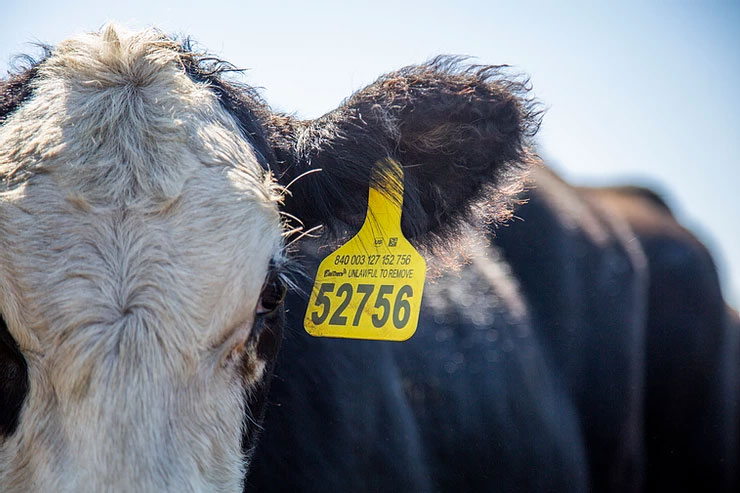WASHINGTON, D.C. – The Agriculture Department’s Animal and Plant Health Service issued a Final Rule on traceability of sexually intact cattle and bison 18 months of age or older, all dairy cattle, in addition to cattle and bison of any age used for rodeo or recreation events, and cattle or bison of any age used for shows or exhibitions.
The rule requires official eartags to be visually and electronically readable for official use for interstate movement of certain cattle and bison, and revises and clarifies certain record requirements related to cattle. The rule goes into effect 180 days following its publication in the Federal Register. There is currently no word on when that will be.
USDA will continue to provide tags to producers free of charge to jumpstart efforts to enable the fastest possible response to a foreign animal disease, APHIS said.
The rule changes are intended to put technology and processes in place to help pinpoint and respond quickly to costly foreign animal diseases, the APHIS press release said.
R-CALF USA CEO Bill Bullard, responded to the recent announcement, saying, “The United States Department of Agriculture (USDA) has slapped independent cattle producers, who have worked closely with the USDA in the past to very successfully control, contain, and eradicate foreign animal diseases, in the face.
“We will fight against the implementation of this disastrous rule that infringes on the freedoms and liberties of our nation’s independent cattle farmers and ranchers. This is government overreach at its worst.”
But Dr. Michael Watson, APHIS administrator said in the release that rapid traceability in a disease outbreak will not only limit how long farms and ranches are quarantined, keep more animals from getting sick, and help ranchers and farmers get back to selling their products more quickly, but will help keep markets open.
A benefit of the rule will be the enhanced ability of the United States to limit the impacts of animal disease outbreaks to certain regions and allow livestock owners to readily prove the disease-free status of their animals in regions not affected by disease outbreaks, according to APHIS.
The National Cattlemen’s Beef Association (NCBA) supported the rule. Wyoming Rancher and NCBA President Mark Eisele issued the following statement:
“USDA’s final traceability rule updates the existing requirement for animal identification that has been in place since 2013, switching from solely visual tags to tags that are both electronically and visually readable for certain classes of cattle moving interstate. Many producers are already familiar with using these visual tags and under the new rule, they will instead use electronic tags.
NCBA has worked hard to secure $15 million in funding for producers to reduce the cost of implementing this change. We also remain committed to safeguarding producers’ private data and continuing to reduce the cost of ear tags for farmers and ranchers.
Our industry faces a tremendous threat from the risk of a future foreign animal disease on American soil. To avoid devastating financial losses during a potential outbreak and to help producers quickly return to commerce, we need an efficient animal disease traceability system.”
NCBA adds that electronic tags are “easier to read and would yield a faster traceability response during a foreign animal disease outbreak.”
A copy of the rule may be viewed now, and the rule will be published in the Federal Register in the coming weeks. This rule will be effective 180 days after publication in the Federal Register.
 Mandatory Testing, Tracing Of All Dairy Cattle Required 〉
Mandatory Testing, Tracing Of All Dairy Cattle Required 〉
In addition, in the wake of Bovine Influenza A, also called H5N1, (also known as highly pathogenic avian influenza in poultry and birds) being detected in dairy herds in eight states, including South Dakota, APHIS has announced a Federal Order instituting mandatory testing for interstate movement of dairy cattle effective Monday.
The order says dairy cattle must receive a negative test for Influenza A virus at an approved National Animal Health Laboratory Network (NAHLN) laboratory before interstate transport, and owners of herds in which dairy cattle have tested positive will be required to provide epidemiological information, including animal movement tracing before any interstate transport, according to APHIS.
In addition, the order requires laboratories and state veterinarians to report positive Influenza A nucleic acid detection diagnostic results in livestock to APHIS, as well as any positive Influenza A serology diagnostic results in livestock.












